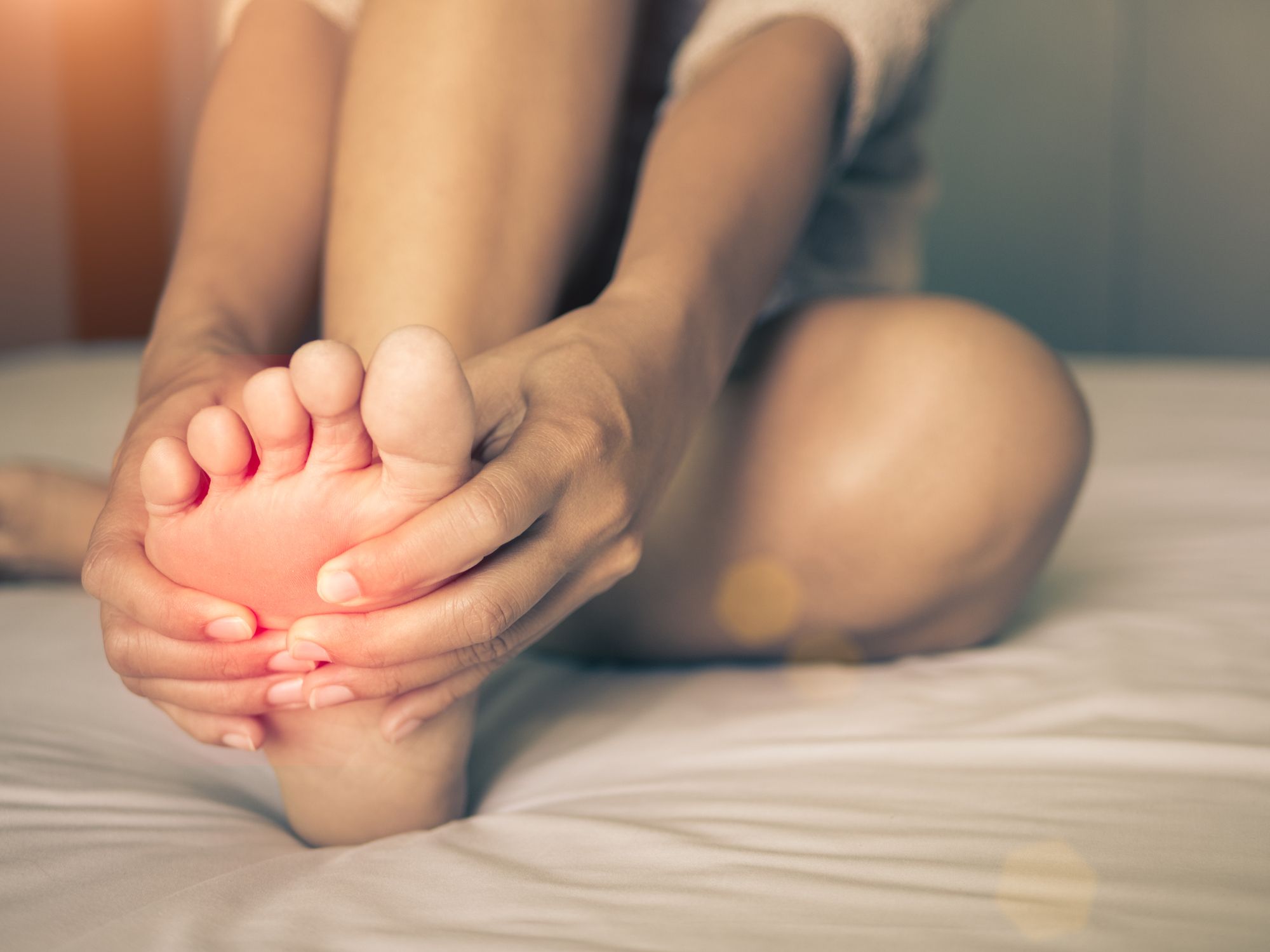Your feet do a lot: They hold you up with their complex network of 10 toes, 26 bones, and more than 120 muscles, tendons, nerves and ligaments. They get you where you want to go while they bear the weight of your body.
But what they also do is give you a glimpse into what's going on in the rest of your body or even reveal hidden diseases.
- Vascular disease. The blockages that can contribute to heart disease can affect other arteries throughout your body as well. Known as vascular disease, the symptoms will often appear in your feet before they appear anywhere else. For example, peripheral arterial disease, or PAD, is caused by the buildup of plaque, or fatty deposits. This buildup can cause a narrowing or hardening of the legs' arteries, which in turn restricts blood flow to your legs and feet. As a result of that restricted flow, you can experience pain in your foot or toe, which can often disturb your sleep.
- Diabetes. This disease that affects nearly 26 million people can involve the feet and ankles, causing pain and discomfort—and, in worst-case scenarios, amputation. How diabetes can show in your feet: swelling and numbness, open sores that take long to heal, bleeding corns and calluses and dry cracks in the skin (especially in the heel area).
- Thyroid problems. Dryness or cracking and brittle toenails can be helped with a good, rich moisturizer—most times. But when that doesn't do the trick, then it might be time to check into your thyroid function, since hypothyroidism (underactive thyroid) can lead to rough, scaly skin, especially on extremities like feet, according to a study in the journal Dermato Endocrinology.
- Gout. If the joint at the base of your big toe is swollen, warm, red and tender, it may be gout, a common form of arthritis. A diet rich in meat and seafood, obesity, and untreated high blood pressure or heart and kidney disease are some risk factors for gout, which is caused by high levels of uric acid in your body.
- Bunions. These bulging, bony growths or misaligned bones at the side of your big toe (and less commonly the small toe) can cause persistent pain in your toe. That pain can extend to your foot. The swelling, redness or soreness that forms around your toe or joint can also lead to the development of calluses or corns where the first and second toes overlap (from the big toe pushing against the toe next to it). The inherited shape of your foot may make you more prone to develop bunions, as can foot injuries or congenital deformities. Some experts also think they may be caused by wearing narrow, too-tight shoes, or wearing pointy shoes or high heels. Read more: Do You Have to Give Up Your High Heels?
- Osteoarthritis. When there's a breakdown in the cartilage that cushions the ends of your bones (where they meet your joints), the result can be painful. Why? The bones rub against one another, leading to stiffness, pain and restricted movement of the joint. When osteoarthritis occurs in the foot, it usually affects the big toe but can cause pain in the middle part of your foot.
- Rheumatoid arthritis. This form of arthritis, a chronic inflammatory disease of the joints caused by an autoimmune reaction, can affect the small joints of the feet. It's not uncommon for the symptoms to appear in several joints of both feet. This can lead to more problems, like corns and bunions, or claw toes or hammertoes (caused by repeatedly stiffening or curling your toes).
- Raynaud's syndrome. The fingers and toes of people with this conditionbecome numb and cold, and sometimes painful, in response to cold temperatures or stress. This occurs when the smaller arteries supplying blood to your skin narrow and limit the circulation to that area. Sometimes referred to as Raynaud's phenomenon, it affects women more than men and is more common in people living in colder climates.
- Plantar warts. It may just appear as a small growth on your heel or other area of your foot, but plantar warts can cause pain. In addition to the wart itself causing pain if it grows inward, it may cause you to alter your normal posture or gait, without even realizing it, and that puts pressure on muscles or joints. Plantar warts are caused by an HPV virus that can enter through small cuts, breaks or other weak area on the soles of your feet. This strain of HPV virus isn't highly contagious from person-to-person, but thrives in warm, moist environments.
- Neuromas. When the tissue around the nerve that sits between the base of your toes (usually between your third and fourth toe) thickens, it can lead to pain and numbness in your foot, particularly in the ball of your foot. The sensation is not unlike stepping down onto a pebble or, worse, a rock. It can cause extreme burning or tingling that radiates into your toes. Known as Morton's neuroma, it's most commonly found among women who wear high heels.


